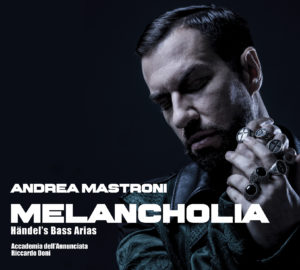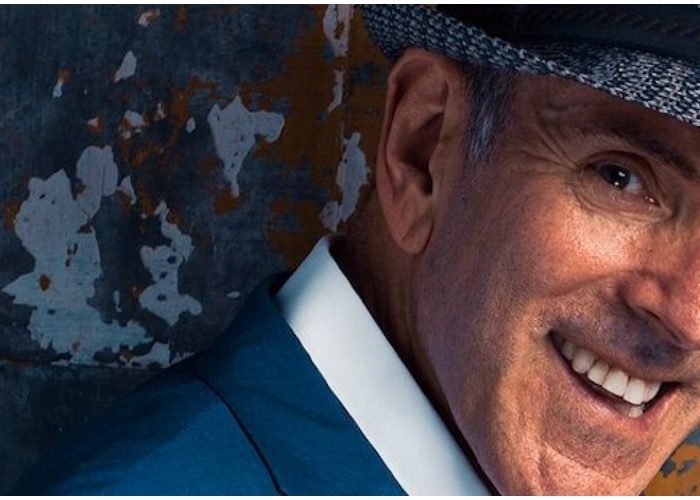
Q & A: Bass Andrea Mastroni On Handel, His Modernity & Complexity of Interpretation
By David SalazarAndrea Mastroni is not just a bass.
The Italian artist actually spent a great portion of his studies as an aesthetic philosopher, working to deepen his understanding of musical texts.
In an interview last year with OperaWire, he noted that this was essential to his ability to be a performer and interpreter. “Learning philosophy makes you think constantly about everything you do and why you do it. You discover things from a different perspective. For example, I am not a lyrical singer that also acts. I am an actor that sings, which is something very different,” he noted. “I am constantly looking at the music and considering the intention, its marriage to the text and every perspective on how to bring the art to life.”
One of the composers that has allowed Mastroni this kind of analysis and investigation is Händel and it is for this very reason that he opted to record an album dedicated to the composer’s bass repertoire.
Here is how a recent conversation with him regarding the noted composer went down.
OperaWire: What was the inspiration for the album?
Andrea Mastroni: The inspiration was to discover the great roles and arias Händel wrote for Bass. During that period this voice type was not well-used for principal roles. But then the composer was dazzled with Antonio Paolo Montagnana’s voice.
Through my philological research, I discovered that his voice was used to sing very difficult arias, distant intervals on low and very high notes and with great agility. And having just recorded “Serse” for Deutsche Grammophon, I discovered what it means to learn and study this repertoire and how much it improves your capacity to sing other period characters.
It’s a not common school of musicality and singing. So I’m going with the flow with my primary music attitude.
OW: What is essential for interpreting the music of Händel?
AM: I think that the special peculiarity of Händel’s music is the capacity to use sensations (the Monteverdi “affetti”) and describe situations. It’s strictly essential for the singer to be an instrumentalist, using the voice with a great variety of expressive colors and intentions. The voice is a real instrument and has to be used on legatos lines with a special warmth and needs a strong flexibility on coloratura moments. It’s not just a “coloratura di bravura” but is an agility with great expression. I’m thinking, for example, on “Voli colla sua tromba” from “Ariodante.” The voice begins like a horn to announce the joy to the court on “Fra l’ombre e gl’orrori,” It needs a strong legato in whole three octaves and requires the ability to be a cello and every range of the voice has to be expressive. Händel’s music needs a voice with a lot of expressive possibilities and a great color, tilted to the intensions. And last, but not least, it’s very important to be conscious of our own capacities to vary the repetition of arias. For this reason too it required great intuition to go inside the character, using variations, knowing exactly which is the best way to express a personality of a singer.
OW: Why is Händel still relevant today?
AM: Händel is still relevant today, because he’s so modern. Don’t forget this was like pop music today. It was very popular. It’s clear that the public in some cases left theaters whistling Händel’s most famous melodies.
He’s still relevant, because modernity is a way to tell something, using the power to express a mood, a mental status. It’s really gorgeous do it!
OW: What did you learn about Händel’s music in recording this album?
AM: Surely I learned a great deal of what bel canto would mean in the next century. Donizetti or Bellini didn’t invent a new style. They continued to find a special “bel canto” style on the vocal lines. It was so evident on “Invida sorte avara,” from “Ariodante” too and I thought that you have to envelop your singing with very clear line and pure, expressive sound. Every sound describes an emotion, exactly like in the early 19th century. The libretto of “invida sorte” can be compared to “Ah non credea mirarti” from “La Sonnambula” for a bass. You need a strong legato, a great attitude to paint on your intentions. In one word, great control has to be intended to the service of the text.
OW: Looking back, what was the greatest challenge in recording this album?
AM: Surely “Fra l’ombre e gl’orrori,” Polifemo’s aria. You need a very deep voice and need to sing in falsetto. It describes the duality of the monster. Ezio’s are also difficult because they both arias [require] impressive vocal range, tormented agility with trumpet.
OW: What was is it like to work with Riccardo Doni? Why was he an essential collaborator on this album?
AM: Riccardo Doni plays cembalo in this recording and conducts too. He’s a great artist and he’s a very famous interpreter of Baroque music! It was an honor singing the recitativos with that beautiful and rich sound. Amazing!!
He’s the artistic director of Accademia dell’Annunciata Orchestra, a great European institution, based close to Milan, Italy.
OW: What future albums would you like to record?
AM: I would record some different projects. I want to do “Agrippina” in the future, a special project featuring Vivaldi’s furore arias and something on Schubert which is one of my great loves.


